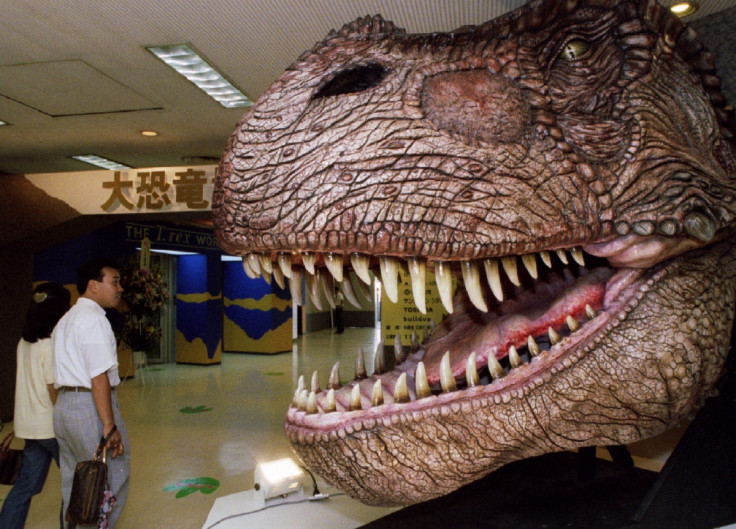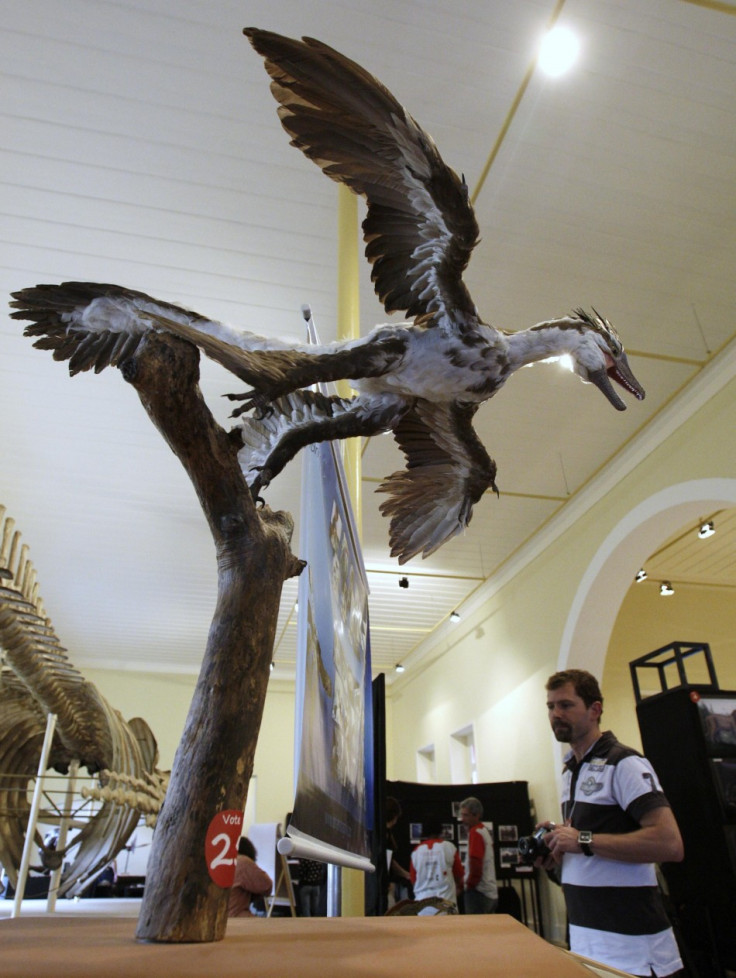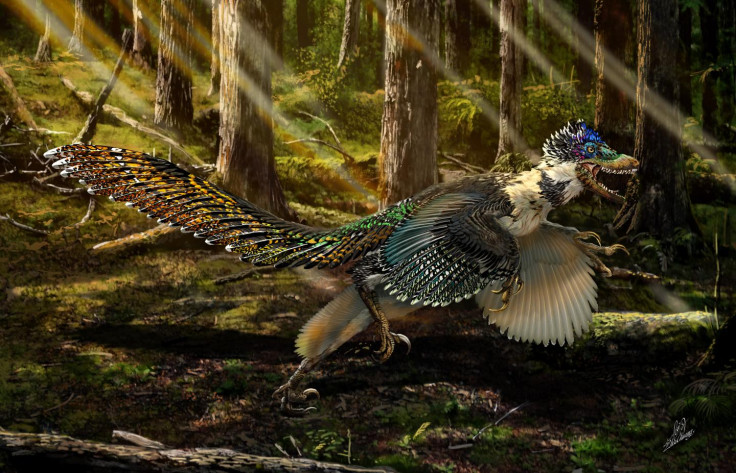Gigantoraptor: World's largest feathered dinosaur coming to new UK exhibition

A unique dinosaur exhibition opens at the Nottingham Natural History Museum during the summer of 2017, featuring fossils and specimens never before seen outside of Asia. In addition to the feathered dinosaurs, there will also be around 23 specimens of some the largest prehistoric creatures ever found in China.
The exhibition brings to life the story of how dinosaurs evolved into modern-day birds. On display will be the best preserved dinosaur fossils from anywhere in the world, not just the bones, but also soft parts including skin and feathers.
One of the highlights of the exhibition will be the Gigantoraptor, which at 4 metres high and 8 metres long is the largest feathered dinosaur ever found. "The feathers that have been found in Gigantoraptor's close relatives are feathers as we would know them today," Dr Adam Smith, curator and palaeontologist at the Nottingham Natural History Museum told IBTimes UK. "They have a long vein and you would recognise it if you found an isolated feather as belonging to a bird. That's why these fossils are so important because they are revolutionising our understanding of the origin of birds and the evolutionary relationship to dinosaurs.
"All of these discoveries have been made in the last 10 -20 years. Gigantoraptor was only discovered in the rocks in 2005 and named and described in 2007. So this is all very recent research and all very new discoveries which completely changes the way we think about dinosaurs.

"If you saw Gigantoraptor walking down the street, you'd think it was a giant chicken rather than our traditional view of a dinosaur. It almost certainly couldn't fly. In fact there's no way it could fly because it's so large. Feathers don't necessarily correlate with flight. And we know that because there are flightless birds today such as ostriches."
The exhibition explores why feathers evolved in the first place. One hypothesis is that they were used to regulate temperature and another theory is that the feathers attracted a mate. "So maybe Gigantoraptor used its feathers for sexual display, like a peacock – maybe it was incredibly colourful," Smith says.
Gigantoraptor may well have been the target of ferocious predators, as it was a large, flightless animal with a lot of meat on its bones. The dinosaur was found in Inner Mongolia in 2005 in rocks that are Cretaceous in age, Smith explains. "It was living alongside relatives of Tyrannosaurus Rex. It's possible that the relatives of T Rex would have been a predator of Gigantoraptor."

Gigantoraptor's diet remains unknown, as it shows both herbivorous features, notably a small head and long neck, and carnivorous features, such as sharp claws. Smith explains: "It probably would have eaten meat if it had caught it, also swallowed fruits and berries – and anything it could get its beak around. So it probably was an omnivore."
The dinosaur was discovered when Chinese scientists were being filmed by a Japanese TV crew in Erlian Basin and at the time thought a bone they uncovered was a long-necked dinosaur, called a sauropod. But on closer examination, they realised it was a creature new to science.
But as they took a closer look, under the gaze of the camera, they at first thought it came from something like Tyrannosaurus rex, but then realised they were staring at a unique dinosaur fossil.
The animal, which lived in the Late Cretaceous period - about 85 million years ago - has an unusual spongy lightweight tail and arm bones. The eight-metre dinosaur, according to an article in Nature, was a new species and genus (group of species), dubbed Gigantoraptor erlianensis, and had a formidable ten-inch beak. Dr Xing Xu at the Chinese Academy of Sciences told The Daily Telegraph: "This is the biggest toothless dinosaur ever found because some dinosaurs have both a small beak and many teeth."
The big bird-like dinosaur would have stood, at the shoulder, twice the height of a man, with feathers at least on its arm and tail. What is most striking, however, is that at 1,400 kilogrammes, the fossil is about 35 times heavier than other similar feathered oviraptorosaurs dinosaurs, which rarely exceeded a body mass of 40 kilogrammes, or around 90 pounds.

Previously, the largest-known feathered animal was the 500kg Stirton's Thunderbird (Dromornis stirtoni) which lived in Australia 8-6 million years ago and was three times smaller.
Also on display is the flying Microraptor, a close relative of Velociraptor which has wing feathers on its arms and legs. This is one of the newly discovered raptor dinosaurs which Smith says is unusual because it had four wings. "It could probably fly but it's a bit of a mystery about how as there aren't many animals around today that have four wings."
It's a close relative of Veliciraptor (of Jurassic Park fame) and Microraptor had a mouthful of teeth and a special curved talon on its toe which served as a hunting claw.

Smith was disappointed by the producers of Jurassic World who knew that Velociraptor was a feathered dinosaur but chose to depict it with scales. "They are intentionally making their dinosaurs inaccurate," he said. "It was a shame to see Jurassic World take a step back in that regard, thinking of them as movie monsters rather than realistic depictions of living dinosaurs. They are 30 years out of date with the latest research."
© Copyright IBTimes 2024. All rights reserved.







